#forging parts in india
Explore tagged Tumblr posts
Text




#automobile components manufacturers in india#automotive parts manufacturers in india#auto parts manufacturers in India#forging manufacturers in India#hammer forging in india#forging components in india#automotive forging parts in india#forging parts in india#agricultural forging parts in india#machine forging parts manufacturer in india#casting and#heavy machinery casting parts in india#sand forging parts in india#Closed Die Forging Manufacturer in india#casting manufacturers in India#casting components in india#automotive casting parts in#india#casting parts in india#agricultural casting parts in india#heavy machinery casting parts#in india#sand casting parts in india#auto casting parts in india#steel casting parts in india#auto mobile castings manufacturer in india#casting components in India#Forged yoke in#casting automobile parts in india#Auto Components Castings Exporter in India
0 notes
Text
The Ultimate Guide to Choosing a Reliable Railway Parts Manufacturer in India
In the fast-paced world of transportation, the railway sector remains a critical backbone of economic development. Ensuring the smooth operation of this sector requires high-quality parts and components. Selecting a reliable railway parts manufacturer in India is essential for maintaining efficiency and safety. This guide will walk you through the crucial aspects to consider when making this important choice, with a special focus on Happy Forging Ltd. (HFL), a leading name in the industry.

Understanding the Importance of Quality Railway Parts
Railway parts are subjected to extreme conditions, including high speeds, heavy loads, and varying environmental factors. This immense stress and wear necessitate components that are robust, durable, and precisely engineered. Every part, from the smallest bolt to the largest axle, plays a critical role in ensuring the smooth and safe operation of trains.
Key Components and Their Roles
Axles: Axles bear the weight of the train and transmit power from the engine to the wheels. They must be exceptionally strong and precisely manufactured to avoid failures that could lead to derailments or other serious accidents.
Wheels: Wheels endure constant contact with the rails, requiring materials that can withstand wear and maintain structural integrity over long distances. Their design affects the train's stability and smoothness of travel.
Brake Systems: Reliable brakes are crucial for controlling the train's speed and ensuring safe stopping. High-quality brake components prevent overheating and ensure consistent performance under various conditions.
Bearings: Bearings reduce friction between moving parts, allowing smooth rotation of wheels and other components. High-quality bearings minimize wear and tear, contributing to the longevity and efficiency of the train.
The Necessity of High Standards
Choosing a railway parts manufacturer in India that adheres to stringent quality standards is vital for several reasons:
Safety: Inferior parts increase the risk of malfunctions that can lead to accidents, posing dangers to passengers and cargo. High-quality parts are engineered to meet safety standards, significantly reducing these risks.
Reliability: Trains operate on tight schedules, and any failure in components can lead to delays and operational disruptions. Reliable parts ensure consistent performance and minimize the likelihood of breakdowns.
Cost-Efficiency: While high-quality parts may have a higher upfront cost, they reduce long-term maintenance expenses. Durable components mean fewer replacements and repairs, saving money over the train's lifespan.

Key Factors to Consider When Choosing a Railway Parts Manufacturer
1. Industry Experience and Reputation
Experience and reputation are strong indicators of reliability. A manufacturer with a long-standing presence in the industry, like Happy Forging Ltd., has likely honed its processes and established robust quality control measures.
Track Record: Investigate the manufacturer’s history. HFL, for instance, has been a trusted name in the railway parts sector for decades.
Client Testimonials and Reviews: Look for feedback from other businesses to gauge the manufacturer’s reliability and service quality.
2. Quality Standards and Certifications
Quality certifications are a testament to a manufacturer's commitment to excellence. Ensure that the railway parts manufacturer in India you choose complies with international and national standards.
ISO Certification: Check if the manufacturer is ISO certified, which ensures they meet rigorous quality management criteria.
Industry-Specific Certifications: For railway parts, certifications like IRIS (International Railway Industry Standard) are crucial.
3. Range of Products and Customization Options
A reliable manufacturer should offer a wide range of products and the ability to customize parts to meet specific requirements.
Product Portfolio: Examine the variety of parts the manufacturer produces. HFL offers an extensive range of railway components.
Customization Services: The ability to produce custom parts is crucial for meeting unique specifications and needs.
4. Supply Chain and Delivery Reliability
Timely delivery is essential to avoid disruptions in operations. Evaluate the manufacturer’s supply chain efficiency and their ability to deliver parts on schedule.
Logistics and Distribution Network: A well-established network ensures timely delivery.
Lead Time: Assess the manufacturer’s lead time and their capacity to handle urgent orders.
6. Customer Support and Service
Excellent customer service is vital for resolving issues quickly and ensuring a smooth collaboration.
After-Sales Support: Ensure the manufacturer provides robust after-sales support and services.
Communication: Effective communication channels are essential for addressing concerns and queries promptly.
Why Choose Happy Forging Ltd. (HFL)?

Happy Forging Ltd. (HFL) exemplifies the qualities of a top-tier railway parts manufacturer in India. With decades of experience, HFL has built a reputation for excellence and reliability. The company is committed to delivering high-quality railway and auto parts that meet stringent industry standards.
Comprehensive Quality Assurance
HFL adheres to rigorous quality control processes. The company is ISO certified and follows industry-specific standards to ensure every part meets the highest quality benchmarks.
Extensive Product Range
HFL offers a wide range of railway parts, from axles and wheels to brake systems and bearings. They also provide customization options to meet specific requirements, making them a versatile auto parts manufacturer in India.
Reliable Supply Chain
With a robust logistics and distribution network, HFL ensures timely delivery of parts. Their efficient supply chain management minimizes lead time and ensures that clients receive their orders without delay.
Exceptional Customer Service
HFL is dedicated to providing excellent customer support. Their after-sales service team is always ready to assist with any issues or concerns, ensuring a smooth and hassle-free experience for their clients.
The Role of an Auto Parts Manufacturer in Railway Parts Production
While the primary focus here is on railway parts, it's worth noting that many manufacturers also produce auto parts. The technological and quality control processes used in manufacturing auto parts can significantly benefit railway parts production.
Shared Technological Advancements
Technological advancements in the auto industry often translate to improvements in railway parts manufacturing. Techniques like precision forging, CNC machining, and advanced material science are common to both sectors.
Cross-Industry Expertise
A manufacturer with expertise in both railway and auto parts can leverage cross-industry knowledge to enhance product quality and innovation. HFL, as an auto parts manufacturer in India, brings this dual expertise to the table, ensuring superior products for both sectors.
Conclusion
Choosing a reliable railway parts manufacturer in India is crucial for maintaining the efficiency and safety of railway operations. Factors such as industry experience, quality standards, technological capabilities, product range, supply chain reliability, and customer support are essential considerations. Happy Forging Ltd. (HFL) stands out as a leading manufacturer, excelling in all these aspects.
By trusting HFL, you ensure that your railway components are of the highest quality, delivered on time, and backed by excellent customer service. Whether you need standard parts or customized solutions, HFL is the go-to choice for reliable and top-quality railway part
#steering knuckles manufacturer#forging#railway parts manufacturer in india#steel forging services in india
0 notes
Text
Unispares India is a prominent forging parts and component manufacturer, known for delivering high-quality solutions to meet the diverse industrial requirements. With a reputation for excellence, Unispares India is your trusted partner for top-tier forging components.
0 notes
Text
0 notes
Link
Do you need Forged Copper Automotive Parts in India ? We Offer a Wide Range of Automotive Parts manufacturers Carried out by our Accredited Engineers. Enquire Now .
Ace Forge Pvt Ltd (AFPL) is a Bangalore based forging company started in the year 1997.AFPL is a specialist cold forging company serving customers across various industries. Plant location has land area of 44000 Sq feet and built up area of 15000 Sq feet.
Visit : https://www.aceforge.in/forged-copper-automotive-parts-in-india.php
0 notes
Text

Batboys as Desi Films

��𝐢𝐜𝐤 𝐆𝐫𝐚𝐲𝐬𝐨𝐧
Dilwale Dulhania Le Jayenge (1995)

Raj and Simran meet during a trip across Europe and end up getting stranded in the middle of nowhere after they miss their train. Despite their initial clashing, they fall in love. However, Simran’s traditional father has arranged her marriage elsewhere. Raj must win over Simran’s family to marry her, leading to a series of heartfelt moments, comedic misunderstandings, and ultimately, a dramatic climax where love conquers all as the couple fights for their happiness against societal norms.
Dick is so raj coded with his quips and charisma. Their chaotic banter and chemistry is off the charts. Any Indian who hasn’t watched this gets their desi card revoked immediately, I don’t make the rules. This movies fits Dick’s dramatic flair perfectly.

𝐉𝐚𝐬𝐨𝐧 𝐓𝐨𝐝𝐝
Goliyon ki Raasleela Ram-Leela (2013)
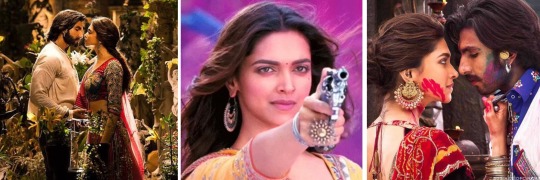
The modern adaptation of William Shakespeare’s “Romeo and Juliet,” set in rural Gujarat, India. It follows the love story of Ram, from the Rajadi clan and Leela, from the Sanera clan, who belong to rival gangster clans engaged in a long-standing feud. Despite the enmity between their families, Ram and Leela fall deeply in love, leading to a tragic and tumultuous journey filled with passion, violence, and sacrifice.
It fits Jason’s love for guns and classics. An absolute visual treat with cinematography and all the songs are absolute bangers.

𝐓𝐢𝐦 𝐃𝐫𝐚𝐤𝐞
Jab We Met (2007)
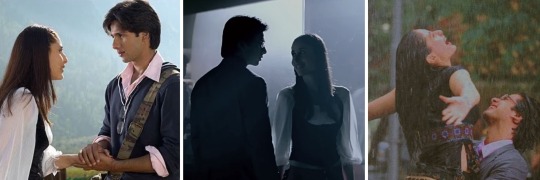
Aditya, a heartbroken business tycoon, someone who was dwelling in the lowest ebb of his life and was almost on the brink of giving it all up, aimlessly boards a train to escape his depressing life. On his journey he meets Geet, a talkative and vivacious young woman. Geet is on her way to meet her boyfriend, but her plans go awry, and she ends up stranded. Aditya, feeling sorry for her, decides to help her get to her destination safely. Along the way, they encounter various adventures and challenges that bring them closer together. Despite their contrasting personalities, they develop a deep connection. However, when they part ways, Aditya realizes his love for Geet and sets out to find her. In the end, they reunite, realizing they are meant to be together.
Grumpy x sunshine. The OG green flag. Epitome of ‘if he wanted to,he would’. Makes my chatterbox heart happy because of how much I relate to the FL. Favourite comfort movie of all time. ML kinda looks like Cillian Murphy’s scarecrow. “I like you a lot but that is my problem, you don’t need to worry about it.” Their fights and his little sassy comebacks and rants were so cute and fun to watch.

𝐃𝐚𝐦𝐢𝐚𝐧 𝐖𝐚𝐲𝐧𝐞
Jodhaa Akbar (2003)
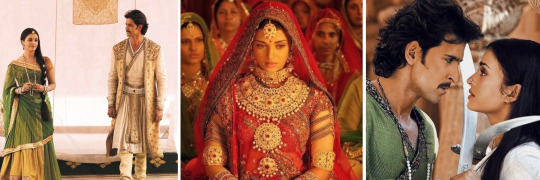
The Mughal emperor Akbar, seeking to forge political alliances, marries Jodhaa, a Rajput princess. Initially a marriage of convenience, their relationship evolves as they learn to respect and love each other. Jodhaa struggles to adapt to Mughal customs, especially with their cultural and religious differences but her courage and integrity win Akbar's admiration. Despite conspiracies and opposition, including from Akbar's own court, their love prevails. The film explores the transformation of a young ruler, initially groomed for ruthlessness by his mentor Bairam Khan, into a wise and compassionate emperor who values mercy, diplomacy, religious harmony and cultural acceptance. Akbar's realization of the importance of religious tolerance, showcased through his abolition of discriminatory policies and his respect for all faiths.
The arranged marriage tag and the ‘raised as a weapon but softens and shows more compassion out of respect and love for his empress’ tag fits demonhead!Damian so much. The way he said mashallah after he pulled off her veil in the middle of a sword fight >>>>. I love how it captures the essence of India’s rich heritage and diversity. “Why seek paradise ? It is before me now.”

𝐁𝐫𝐮𝐜𝐞 𝐖𝐚𝐲𝐧𝐞
Khoobsurat (2014)
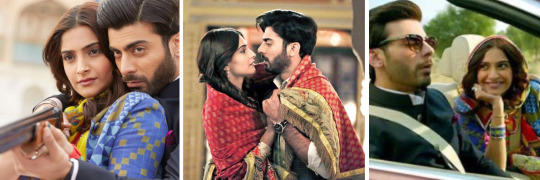
Milli, a free-spirited and eccentric young woman becomes the physiotherapist for a royal family. She brings her lively yet clumsy personality into the conservative royal household, shaking up their structured lives. It clashes with the formal atmosphere of the palace, especially with the stern matriarch, Nirmala Devi. Despite initial resistance, Milli's unconventional methods bring joy and laughter into the lives of the family members, including the brooding prince, Vikram. As Milli navigates the challenges of fitting into the royal household, she also finds herself falling in love with Vikram, leading to a series of comedic and heartwarming moments.
Very cliched (well it is a Disney film) and the second hand embarrassment is unreal but sometimes after a long day all you need is a feel-good cheesy rom-com. Oh to sit next to Fawad Khan in a red convertible while gazing lovingly at him. I like how she emphasises on improving the patient’s mental health to help him heal. Incase you haven’t noticed already, cold brooding™️ x silly goose is my favourite character dynamic.

𝐀/𝐍 - I’ll be honest with y’all, this was to satiate my desire of writing x desi! reader cuz I don’t have enough motivation or time to do it T^T

#batman#batfam#dick grayson#nightwing#dick grayson x reader#jason todd#red hood#red hood x reader#tim drake#red robin#tim drake x reader#damian al ghul#damian wayne#robin#damian wayne x reader#batboys#bruce wayne#batman x reader#bollywood#movies#bruce wayne x reader#ddlj#dilwale dulhania le jayenge#jab we met#khoobsurat#jodhaa akbar#ram leela
320 notes
·
View notes
Text



Ashes to flames
Part 1
British India:
1940s.
The flames flickered and crackled ominously as they prepared the pyre. You stood there, clad in a brilliant red silk saree that shimmered under the fading light. The red dot between your eyebrows, the sindoor parted across your scalp, and the heavy gold jewellery that adorned your fragile frame all marked you as a widow, a bride bound to her husband, even in death Your pearly white skin, striking against the deep red of your garments, seemed too pure, too innocent for the fate that awaited you.
Your long, dark black hair, wavy and unbound, cascaded down your back like the night sky, and the henna tattoos that covered your slender arms and feet were still vibrant from your wedding day. Each intricate pattern felt like a mocking reminder of what should have been, but never was.
The weight of the moment pressed upon you, and memories rushed through your mind like a torrent you couldn’t stop.
You had been born into a wealthy Rajput family, one of privilege and tradition. Your parents, progressive for their time, had sent you to school with British girls. You could still hear your father's proud voice.
"You're not just a daughter," he’d said, his eyes gleaming with pride, "you're my pride. You will make your own path in this world."
But the dream of forging your own path had shattered the day he passed away. The vibrant, strong man who had nurtured your hopes and dreams was gone, and with him, your world collapsed. You remember standing there, watching as your mother stepped into the pyre beside him, her face serene with acceptance, fulfilling her role in the cruel practice of sati.
You had begged her not to go, gripping her hand tightly, but she had only smiled. "This is my duty, my child," she had whispered. "It is what we must do."
And now it was your turn.
At 23, you had been forced into a marriage with an 80-year-old man, a frail and terminal figure you barely knew. Your uncle had orchestrated it all, ignoring your protests and pleas. Your life, once filled with promise, had been reduced to caring for a dying man, a man who never loved you, never saw you as more than a young wife to be bound to his deathbed.
As you stood upon the pyre, your heart pounded in your chest, cold terror coursing through your veins. The deceased body of your husband lay beside you, his wrinkled face unmoving, eyes closed in eternal sleep. It felt like a nightmare you couldn’t wake from.
Your uncle’s voice boomed from behind you, cold and resolute. "It is time. Your duty is clear. You belong to him, in life and in death."
Tears stung your eyes, but you didn’t let them fall. You were an abomination, they said, cursed to burn beside your husband. There was no escape now. You looked at the faces in the crowd, their expressions a mixture of reverence and indifference.
"I don’t want to die," you whispered to yourself, the words barely audible above the crackling wood and the ceremonial chants. Your body felt too fragile for the weight of what was expected of you.
For a moment, the world around you blurred, and you were back in the classroom, sitting at a desk with your British classmates, laughing and learning. You remembered the joy of those days, the dreams you had once nurtured, and the freedom you had tasted.
But it was all gone now.
The fire beneath the pyre roared to life, the heat licking at your feet, pulling you back into the present. Your breath hitched, your hands trembling as they were bound for the final rites. The crowd began to chant, their voices blending with the wind, carrying you closer to your fate.
You stood in shock, your mind screaming for escape, but there was none. The flames rose higher, and the scent of burning wood filled the air.
In that final moment, as the fire closed in, you closed your eyes and let the memories of your father, your mother, and the life you had once dreamed of wash over you. You had been a flower, once full of life, now destined to wither in the flames.
The flames raged around you, a roaring inferno that licked at the edge of your red silk saree, threatening to consume you whole. The air was thick with smoke and the acrid scent of burning wood, filling your lungs with every breath. Your screams had become raw, a desperate plea that seemed to vanish into the night, absorbed by the rising chants of the crowd. Their faces, once familiar, now appeared distant and monstrous in the glow of the fire. Every inch of you trembled, trapped in the suffocating weight of tradition, knowing there was no escape.
Suddenly, through the deafening roar of the flames, another sound broke through, the thunder of hooves pounding the earth, fierce and unyielding. The chanting faltered, and for a moment, all eyes turned toward the source of the sound. Out of the swirling smoke, a figure emerged on horseback, riding at full gallop. The villagers stumbled back, their voices fading as the rider approached.
"Enough!" A voice rang out like a clap of thunder, so powerful it seemed to silence the world. It cut through the noise through the chaos, commanding attention.
Through the haze, you saw him, Lieutenant Admiral Simon Riley. His tall, imposing figure sat astride a powerful black horse, the silver insignias on his pristine uniform gleaming under the darkening sky. His face was set in a mask of anger, jaw clenched, eyes burning with purpose. His gaze met yours across the pyre, and in that moment, time stopped. The weight of the flames, the pressing heat, the terror, all of it disappeared as his eyes locked onto yours. They were sharp, focused, and filled with a fierce determination that left you breathless.
In one swift motion, Simon dismounted, drawing his sword in a fluid arc. The blade gleamed like polished silver, a beacon of power in the dim light. Without hesitation, he strode through the crowd, parting them with the sheer force of his presence. The people, once so confident in their cruelty, shrank back in fear.
His gloved hand reached for you. Strong, steady, unwavering, he grasped you by the waist as though you weighed nothing. With effortless strength, he lifted you from the pyre, cradling your fragile frame against his chest. The heat of the flames still crackled beneath your feet, but in his arms, the terror that had gripped you began to fade. You clung to him, your heart pounding, your body trembling from shock.
“I am taking her with me,” Simon declared, his voice low but lethal, cutting through the murmurs of the crowd. His sword remained raised high, its deadly point gleaming, daring anyone to approach.
Your uncle, face flushed with rage, stepped forward. “You can not do this!” he shouted, his voice trembling with fury. “She is an abomination! The consequences, " He faltered, his eyes flickering with a mix of fear and arrogance. “The consequences won’t be good. Saahib, I warn you.”
Simon’s icy blue eyes narrowed as he turned to face your uncle. “You dare threaten me?” he asked, his voice dangerously calm. His grip on you tightened, his body a wall of strength and defiance. “You call her an abomination, yet you are the one trying to murder an innocent woman in the name of your backwards traditions.”
One of the villagers, emboldened by your uncle’s words, stepped forward. “She has a duty to fulfil! She must burn with her husband. It is our way!”
Simon’s jaw clenched as he glared at the crowd. “Over my dead body!” he thundered, his voice booming across the gathering. “You barbarians think you can hide behind your so-called customs? Killing an innocent woman under the guise of tradition? I will not allow it.”
His eyes swept over the villagers, daring them to defy him. No one moved. Even your uncle, who had always wielded power over your life, seemed small and insignificant in the face of Simon’s wrath.
The soldiers who had followed Simon arrived on horseback, dismounting swiftly and surrounding their commander, their faces set in grim determination. They moved into formation, shields, and rifles at the ready, forming an impenetrable barrier between Simon and the villagers. The crowd’s courage crumbled as Simon’s men stood at attention, their loyalty to him unshakeable.
Simon sheathed his sword with a sharp clink and swiftly mounted his horse, never once loosening his protective grip on you. With one fluid motion, he pulled you up onto the saddle in front of him, his arms encircling your body as he guided the reins. You pressed against his chest, your heart racing, your body trembling, still reeling from the terror of what had almost been your fate.
“Hold on,” Simon whispered, his breath warm against your ear, his voice gentle now, a stark contrast to the fury he had shown moments before.
As he urged the horse forward, the powerful animal surged ahead, hooves pounding the earth as the village disappeared behind you. The wind whipped through your unbound hair, and the world blurred around you as Simon rode with speed and precision, cutting through the night. His chest was firm against your back, a solid presence that anchored you as the remnants of the horror faded into the distance.
You glanced up at him, still too shocked to speak. His face was set in determination, but there was a tenderness in the way he held you, as if he had just saved something precious. His residence came into view on the horizon, a beacon of safety amidst the storm of chaos you had left behind.
As the horse galloped toward his estate, you knew that the life you had been condemned to, the pyre that had almost claimed you, was far behind. In Simon’s arms, you had been saved, not just from death, but from a life you had never chosen.
By the time you reached his mansion, your body had given up. The exhaustion, the terror, the sheer weight of what you had just survived had drained you of every ounce of strength. You could no longer hold on, and with a faint sigh, you collapsed in his arms, your head lolling against his chest as unconsciousness claimed you. Simon’s strong arms caught you, his grip unwavering as he dismounted his horse with practised ease, cradling your limp form close to him.
The grand doors of his mansion swung open as Simon carried you inside, his boots echoing sharply against the marble floors. His face was a mask of calm control, though the tension in his jaw betrayed the turmoil raging beneath the surface. The servants, startled by the sight of their master carrying an unconscious woman, rushed forward, their eyes wide with disbelief.
"Sati! But she is alive!" one of the servants gasped, his eyes flicking nervously between you and Simon. The whispers spread like wildfire, murmurs of shock and confusion filling the air.
Simon’s eyes, cold and resolute, silenced the room. “She will stay alive,” he said, his voice brooking no argument. There was a finality in his tone, a command that left no room for doubt.
“But, Saahib… you shouldn’t have brought her here,” another servant, an older man with worry etched into every line of his face, stepped forward cautiously. He glanced nervously towards the door, his voice lowering as he continued, “They will come for her. The village… they won’t let this go.”
Simon’s eyes darkened, a flash of anger crossing his face as he looked down at you, your fragile form still limp in his arms. “She will stay here from now on,” he declared, his voice firm, leaving no room for argument. His gaze returned to the old servant, daring him to say otherwise.
The servant hesitated, wringing his hands together anxiously. “But, sir… she has committed...”
“She has committed nothing,” Simon interrupted sharply, cutting him off with a glare that froze the words in his throat. “What they tried to do to her, that was a crime.”
Without waiting for another word, Simon turned and carried you through the wide, opulent halls of his mansion, the luxurious surroundings a stark contrast to the horrors you had just escaped. He moved with purpose, his grip on you gentle yet protective as if he were carrying something precious and fragile. As he reached his private chambers, he nudged the door open with his boot, striding inside.
He walked toward his grand bed, the soft linens and dark wood frame a world away from the pyre you had almost perished upon. Lowering you carefully onto the bed, Simon’s touch was tender, as if he feared you might break. He adjusted the pillows beneath your head, smoothing your hair from your face as he stood over you, his gaze softening for the briefest moment.
“She has nowhere to go,” he murmured, more to himself than to anyone else, his eyes never leaving your unconscious form. His fingers brushed against your cheek, the warmth of his touch a faint comfort against your feverish skin.
The silence hung heavy in the room as Simon stood beside you, the weight of his decision clear in the set of his shoulders. He had saved you from the flames, but he knew the storm was far from over. They would come for you. But as long as you remained under his roof, under his protection, they would have to get through him first.
And Simon Riley had no intention of letting you go.
The soft clink of your heavy gold bangles stirred the quiet room, breaking the early morning silence. You blinked your eyes open, the weight of the ornate jewellery and the lingering scent of smoke bringing back the harsh memories of the night before. Your body felt heavy and exhausted, but you were alive. The bed beneath you was soft, a far cry from the pyre you had stood on, and the air was cool and still.
Simon, who had been standing near the window, turned at the sound of your stirring. His eyes, sharp and alert, softened when they met yours. "You’re awake," he said, his voice low but gentle.
You slowly sat up, feeling the weight of your golden jewellery shift as you moved. The red silk saree you still wore clung to you, a reminder of the ritual that had nearly claimed your life. Simon watched you closely, his expression unreadable for a moment, but there was something in his gaze, something like awe. You looked like an Indian goddess sitting there, the rich red fabric and gleaming gold of your attire contrasting with the delicate vulnerability of your face. Even in your weakened state, you were breathtaking.
He took a step closer, his eyes never leaving yours. “You are safe now,” he said softly, his tone reassuring, firm. “Nobody will touch you. I will make sure of that.”
The conviction in his voice made your chest tighten with gratitude and fear all at once. He was offering you something precious: safety. A luxury you hadn’t known since you were forced into this nightmare.
“The servant will prepare breakfast for you,” Simon continued, his voice softening as he spoke. “Whatever you wish to eat, just tell him.” He offered a faint smile, one that barely reached his eyes before turning to leave, giving you space to gather yourself.
But something inside you panicked as you watched him turn away. Your hand reached out instinctively, fingers curling around his wrist. “They will come back for me,” you whispered, your voice trembling, the fear returning in waves. The memory of the village and the pyre still haunted you, lurking just beneath the surface.
Simon paused, his back still to you, his muscles tensing beneath your grip. For a moment, he said nothing, his silence weighing heavy in the air between you. Then, he turned his head slightly, his voice calm but resolute. “We’ll see,” he replied, his tone carrying a quiet confidence that made you want to believe him.
Just then, the door creaked open, and Simon’s servant stepped into the room, bowing slightly. “Saahib,” he said, a nervous tremor in his voice, “the village minister has come to see you.”
Your grip on Simon’s wrist tightened, fear surging through you once more. “They’re here to take me,” you muttered, dread filling your voice.
Simon looked down at you, his expression softening as he gently removed your hand from his wrist. “Relax,” he said, his voice steady and reassuring. “I will take care of them.”
He turned and strode out of the room, his footsteps purposeful, leaving you alone with the crushing weight of your fear. You sat there, frozen, barely breathing as you listened to his retreating footsteps echo down the hall. The walls of his grand mansion felt suffocating now, closing in around you as the threat loomed just beyond the doors.
Simon entered the living room, his posture straight, his face unreadable as he approached the man waiting for him. The village minister stood at the threshold, his weathered face lined with anxiety. As Simon drew nearer, the minister removed his turban and knelt before him, bowing his head low in submission. The gesture, one of both respect and desperation, seemed to fill the room with an oppressive air.
“Saahib,” the minister began, his voice thick with pleading, “please… I put my honour before you. Give her back to us.” He kept his head bowed, his hands trembling as he placed his turban at Simon’s feet, a symbol of his surrender.
Simon’s eyes flashed with anger, his jaw tightening at the man’s words. He took a step forward, his presence towering over the kneeling minister. “Give her back to you?” Simon’s voice was low, but there was an edge to it, sharp as a blade. “So you can burn her alive again?”
The minister flinched at Simon’s words but kept his head bowed, the weight of his shame clear. “It is our way, Saahib. The village demands it… her duty...”
“Her duty?” Simon’s voice rose, cutting the minister off sharply. He took another step forward, looming over the man. “Her duty is to survive, not to be thrown into the flames like an offering to your backwards traditions.”
The minister dared to look up, his eyes wide with desperation. “Please, Saahib, you do not understand… This is how it has been for generations. The village...”
“Don't try to lecture an officer of the East India Company. I don’t care about your village,” Simon snapped, his anger barely contained. “I will not let you murder her. Not under my watch.” His voice dropped to a dangerous whisper, and he leaned in slightly, his eyes blazing. “If you think you can come here and take her, you’ll have to go through me first.”
The minister’s face paled, his mouth opening and closing as he struggled to find words, but there was no room for argument. Simon’s authority, his sheer presence, left no space for negotiation.
“Go back to your village,” Simon said coldly, stepping back. “Tell them she is under my protection now. If anyone dares try to harm her, they will face the full force of the British army.”
The minister, trembling, scrambled to gather his turban and stumbled to his feet. He nodded hastily, backing away toward the door. “Yes, Saahib. I will… I will tell them,” he stammered before turning and fleeing from the mansion, leaving Simon standing alone in the heavy silence of the room.
Simon exhaled slowly, his fists unclenching as the tension ebbed from his body. He had made his stance clear, but he knew the battle was far from over. They would return, perhaps with more men, more pressure. But for now, you were safe.
And that, Simon vowed, was all that mattered.
#ghost call of duty#simon riley#simon ghost riley#ghost cod#call of duty#cod ghost#modern warfare#ghost x reader#modern warfare 2#ghost x y/n#ghost x female reader#ghost x female oc#simon ghost x you#simon ghost x reader#simonghostriley#simon riley x y/n#simon riley x you#simon riley x reader#simon riley x oc#simon ghost riley x you#simon ghost riley x reader#simon ghost riley x female oc#ghost simon riley#simonghost#simon riley ghost#simon ghost riley x female reader#simon riley x female reader#simonghostrileyheadcannons#romance#romantic
29 notes
·
View notes
Text

A devastating rail crash that left almost 300 people dead has refocused international attention on the importance of railways in the lives of Indians.
Indeed, to many Western observers, images of men and women crammed into overcrowded cars serve as a metaphor for modern India. Take, for example, a report by German newspaper Der Spiegel on India’s population surpassing China’s. Published just weeks before the accident in Odisha province on June 2, the now much-criticized cartoon depicted a shabby Indian train crammed with passengers rushing past a streamlined Chinese train with only two people in it.
Where does this enduring image in the West of Indian railways – and of India – come from? As a scholar of Indian history and author of 2015 book “Tracks of Change: Railways and Everyday Life in Colonial India,” I believe the answers lie in the gigantic infrastructure projects of the 19th century – forged at the intersection of colonial dictates and capitalist demands.
---
A carrier of freight, not people
Railways remain the backbone of passenger traffic in India, transporting some 23 million people daily. In the pre-pandemic 2018-19 financial year, 7.7 billion passenger journeys in India. [...] Yet, when first planned in the 1840s, India’s railways were intended to primarily transport freight and livestock, not people. Indians were thought unlikely to become railway passengers by directors of the English East India Co., a merchant monopoly that gradually annexed and administered large parts of India under U.K. crown control. [...] However, early colonial railway policy was driven by pervasive Orientalist imaginings of a people rendered immobile by poverty, living in isolated villages [...]. The trope interlocked with colonial thinking that railways would foster greater industrialization which in turn would further a capitalist economy. They also aligned with the practical needs of a colonial trading monopoly which needed raw materials for English industries, such as cotton, to be moved swiftly and efficiently from India’s interiors to port towns [...].
---
Despite the doubters, the new Indian railways attracted an increasing number of passengers. The half-million passengers recorded in 1854 when tracks became operational increased to 26 million in 1875. By 1900, annual passenger figures stood at 175 million and then almost trebled to 520 million by 1919-20. By the time of the partition of India in 1947 it had risen to more than 1 billion passenger journeys annually. Indeed, images of overcrowded trains came to epitomize the upheaval of partition, with the rail system used to carry swaths of uprooted peoples across the soon-to-be Pakistan-India border. Third-class passengers, overwhelmingly Indians, comprised almost 90% of this traffic. These escalating figures did not, however, generate a lowering of fares. Nor did they result in any substantial improvements in the conditions of [...] travel. [...]
---
The generally British railway managers seemed disinclined to remedy systematic overcrowding, which included transporting passengers in wagons meant for livestock. Rather, they insisted that such overcrowding was caused by the peculiar habits and inclinations of Indian passengers: their alleged [...] inclination to follow one another “like sheep” into crowded carriages. These attributes were soon rendered into a more public narrative, especially among Western mindsets. Journalist H. Sutherland Stark, writing for the industry publication Indian State Railways Magazine in 1929, stated that though “unversed” in railway administration and traffic control, he knew railway facilities were not the problem. Rather, Indian passengers lacked the mental preparedness, “self-possession” and “method” necessary to travel like “sane human beings.” Stark suggested passenger education as a solution to the perceived problem, making railway travel a tool for “self-composure and mass orderliness.” [...]
---
More than a century later, this depiction endures, though, ironically, it now serves as a foil to understanding contemporary India. In a piece published in The New York Times on March 12, 2005, the author lauded the then-new Delhi metro, emphasizing that it had “none of the chaotic squalor of hawkers and beggars that characterizes mainline railroads in India, nor do desperate travelers hang from the sides of the trains.” As the debate rages on whether safety has taken a back seat to “glossy modernization projects” in India – early analyses suggest signaling failure might have caused June 2, 2023, accident – railways continue to represent India’s history.
In the heyday of empire, they were deemed the technology through which Britain would drag India into capitalist modernity. In 1947, they became a leitmotif for the trauma of the partition that accompanied the independence of India and Pakistan. As the coverage of Odisha accident reminds us, it continues to be a metaphor in the West for evaluating contemporary India.
---
Headline, image, caption, and all text above by: Ritika Prasa. “Overcrowded trains serve as metaphor for India in Western eyes -- but they are a relic of colonialism and capitalism.” The Conversation. 9 June 2023. [Bold emphasis and some paragraph breaks/contractions added by me.]
152 notes
·
View notes
Text
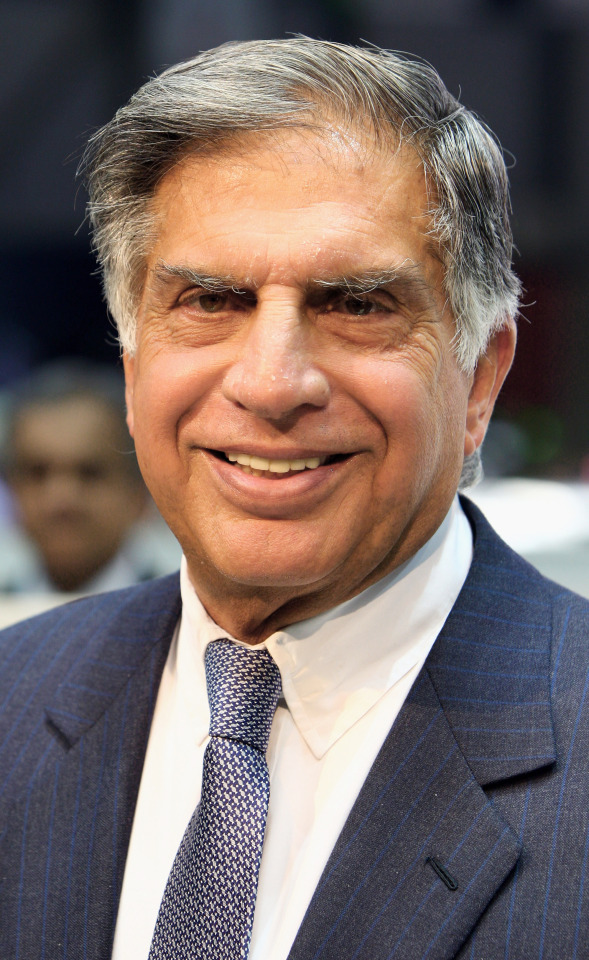
Ratan Tata
Indian business tycoon who turned his family’s Tata Group into a global player, and invested heavily in British industry
Ratan Tata, who has died aged 86, was India’s most celebrated industrialist. He modernised the unwieldy business empire founded by his great grandfather in the 19th century and internationalised it. In the process he spread his interests into western countries, with mixed results.
For the UK, that included the £271m purchase of the Tetley Group in 2000, followed more controversially by the acquisition of the steel company Corus for £6.2bn in 2007. Then, in 2008, Tata, himself a car enthusiast, added the troubled Jaguar Land Rover motor business for a further £1.75bn.
He joined the family firm, Tata Steel, in 1962. Educated in the US, and newly qualified as an architect, the young Tata had, he said, no intention of returning to India. But family ties won out. When his ailing grandmother, Navajbai, who had raised him, asked him to return he did so. He was soon promoted, building his reputation with tough reorganisation, followed by more troubleshooting at the electronics and textile companies.
In 1981, he was made chairman of Tata Industries, and found himself confronting an assortment of separate businesses, with different ownership patterns over which there was little formal control. He made a blueprint for reorganisation, having spent time at the Harvard Business School, but it was rejected after opposition from semi-autonomous bosses.
However, in 1991, the 81-year-old patriarch of the group, JRD Tata, chose him as his successor as the overall chairman. Asked why, he replied: “He has a modern mind.”
Tata soon demonstrated it with a tough programme of reshaping that, against continuing opposition, brought closures, job reductions, and the departure of the heads of the steel, hotel and chemical businesses.
He began to focus more on brands and less on heavy industry, and he benefited from the deregulation of Indian industry championed by Rajiv Gandhi. As part of it, he took the company more heavily into the motor industry. Tata lorries already dominated Indian highways, but now he moved into the car business in line with his own enthusiasms. While always seen as a man of modest habits, he had his own lovingly maintained collection of high-powered and classic cars, and delighted in driving them along Mumbai’s Marine Drive most Sundays.
Tata produced what was called “the first Indian car”, designed by and for Indians, in 1998. Ratan did some of the first drawings himself. The Tata Indica was a success. But when he went further a decade later, and the company conceived the Nano, a tiny saloon described as the world’s most affordable car at a price of about £2,000, the project failed. Such a cheap car was not enticing even to those “on two wheels” whom he hoped to attract.
In 1999 Tata had travelled to Detroit to discuss the sale of the motor business to Ford, only to be asked why his firm had gone into the passenger car business when it clearly knew nothing about it. Later he would turn the tables, buying underperforming Jaguar Land Rover from Ford and reviving it.
With sell-offs and cutbacks, Tata reorganised the group into 98 operating companies from more than 250, reducing the labour force by more than a third. He forged alliances with foreign companies and went into information technology.

He stepped down in 2012, observing the compulsory retirement rule he had himself introduced, but was still regarded as “chairman emeritus” and was brought back unhappily for a few months when his successor was sacked four years later.
His most shocking day came in 2008, when terrorists took over the Tatas’ Taj Mahal hotel on the front at Mumbai with great loss of life. The company has continued to support staff affected and the families of those who died.
Ratan was born in Mumbai, into the large Parsi Tata family, whose wealth came from a scattered collection of businesses including textiles, hotels, engineering, steel and tea. His father, Naval, had been adopted by the son of the founder, Jamsetji Tata. After Naval and his wife, Soonoo, separated when Ratan was seven, the child was brought up with his younger brother, Jimmy, by his grandmother in a grand Tata mansion in central Mumbai.
Aged 17 he was sent to the US to attend Riverdale Country school in New York City, from where he entered Cornell University in Ithaca, New York. He studied engineering before switching to architecture, graduating in 1959. He worked as an architect for a while in Los Angeles before returning to India, and Tata Steel.
In his 20 years at the helm, Tata’s sales grew by 22% annually and its international revenues rose from a quarter to 58% of the total, while Tata Consultancy Services became Asia’s largest software company.
His British investments have been among his less successful. Corus was bought for an over-the-top £6bn just before the global financial crash devastated the industry. Tata claimed it as “the first big step that Indian industry has taken as a global player”. It was later described by a senior Tata executive as “worthless”. The firm is currently negotiating terms of new investment at Port Talbot, which would be accompanied by hundreds of redundancies, while huge plants on Teesside and Scunthorpe have already been closed or sold for a nominal sum.
Jaguar Land Rover was initially a happier story. Tata’s major investment, including in research and development, made the company for a while the largest foreign investor in British industry. But eight years of profits have been followed by losses since 2018.
Surveying the British scene in 2011, Tata told the Times: “Nobody seems to want to exert the effort to make the UK truly competitive. It’s a work ethic issue. In my experience in both Corus and JLR, nobody is willing to go the extra mile.”
He was a major figure in the international business community, close to US politicians as well as the Indian government, advising the former prime ministers Gordon Brown and David Cameron, and sitting on the boards of multinational institutions.
He was also known as a major philanthropist. Many of the Tata companies were owned through trusts he chaired, and huge sums were provided for medical research and university projects both in India and abroad, particularly in the US, where a number of campuses have buildings bearing his name.
A softly spoken man, renowned for his courtesy, he never married, although he described himself as having come close four times. He was known for living modestly, although his recreations included flying his private jet and driving his collection of expensive cars, as well as a speedboat. He was noted for his love of dogs. The Tata headquarters in Mumbai had kennels and made provision for street dogs, and he was a donor to canine charities. In 2014 he was made GBE.
He is survived by Jimmy, by his stepmother, Simone, a half brother, Noel, and two half sisters, Shireen and Deanna.
🔔 Ratan Tata, businessman, born 28 December 1937; died 9 October 2024
Daily inspiration. Discover more photos at Just for Books…?
6 notes
·
View notes
Text
status -> closed starter for @succiducus {rostam}
setting -> in their shared chambers before the mysteries of osiris gala

seated in front of the vanity to finish preparing for the gala, just nearly ready to leave, ariyan screwed the lid back on the glass vial of rose oil after rubbing it into the ends of their hair. a floral scent clung to the jet-black strands, robes && layers light for the warm brazilian winter in a muted shade of red. not many got to see the rituals ariyan had for getting ready; but for those very few privy to such habits would know that ari took pride in the presentation of their appearance, each decision a careful selection.
" are you just about ready? " ariyan asked, tying back shoulder length waves with a ribbon, out of their face, before discreetly sliding a small, plain box from the vanity, concealed within their hand easily. a ring - ariyan had one designed, from a metalsmith from india. even if not culturally necessary, ari saw the merit in tradition; and part of them didn't want to let go of every part of them forged from the fires of home. besides - it felt fair, should ariyan be wearing rings of recognition in power in thanks to their husband, as should rostam have such ability. " come here then. i have something for you to wear tonight. "

7 notes
·
View notes
Text




#automobile components manufacturers in india#automotive parts manufacturers in india#auto parts manufacturers in India#forging manufacturers in India#hammer forging in india#forging components in india#automotive forging parts in india#forging parts in india#agricultural forging parts in india#machine forging parts manufacturer in india#casting and#heavy machinery casting parts in india#sand forging parts in india#Closed Die Forging Manufacturer in india#casting manufacturers in India#casting components in india#automotive casting parts in#india#casting parts in india#agricultural casting parts in india#heavy machinery casting parts#in india#sand casting parts in india#auto casting parts in india#steel casting parts in india#auto mobile castings manufacturer in india#casting components in India#Forged yoke in#casting automobile parts in india#Auto Components Castings Exporter in India
1 note
·
View note
Text
Railway Parts Manufacturer in India: A Detailed Analysis

Introduction to Railway Parts Manufacturing Industry in India
The railway parts manufacturing industry in India plays a crucial role in supporting the country's vast railway network. India has one of the largest rail networks in the world, making the demand for railway parts consistently high. This industry includes the production of components such as wheels, axles, bearings, and various other essential parts needed to keep trains running smoothly and safely.
The railway sector in India is driven by both the Indian Railways and various private players, ensuring a steady flow of orders for manufacturers. Companies in this sector range from small-scale industries to large, established firms, all contributing to the robust supply chain necessary for the operation and maintenance of the railway network.
Importance of Railway Parts Manufacturing
Railway parts manufacturing is essential for several reasons:
Safety: High-quality parts ensure the safety of trains, passengers, and goods. Faulty components can lead to accidents, causing loss of life and property.
Efficiency: Well-manufactured parts help in the smooth operation of trains, reducing downtime and delays. This efficiency is critical for both passenger and freight services.
Economic Impact: The railway industry is a significant contributor to the Indian economy. The manufacturing of railway parts provides employment to thousands and supports numerous ancillary industries.
Innovation and Growth: Continuous innovation in railway parts manufacturing leads to improved performance and new technologies, contributing to the overall growth of the railways.
However, the industry faces challenges such as fluctuating raw material prices and the need for constant technological upgrades to meet global standards.

Manufacturing Capabilities and Technologies
India's railway parts manufacturing sector boasts a wide range of capabilities and uses advanced technologies to meet the needs of modern railways:
Precision Engineering: Companies use state-of-the-art machinery to produce components with high precision. This ensures that parts meet strict quality standards.
Automation: Many manufacturers employ automated processes to enhance production speed and reduce human error. This includes the use of robotics and computer-controlled machinery.
Material Science: Advanced materials like high-strength alloys and composites are used to manufacture durable and lightweight parts, improving the performance and lifespan of railway components.
Quality Control: Rigorous quality control measures, including non-destructive testing and computerized inspection systems, ensure that only the best parts reach the market.
Despite these advancements, some manufacturers struggle with the high cost of technology adoption and maintaining skilled labor.
Market Trends and Growth Opportunities
The railway parts manufacturing industry in India is evolving with several key trends and opportunities:
Government Initiatives: The Indian government has launched various initiatives, such as "Make in India," to boost local manufacturing. This provides significant opportunities for railway parts manufacturers to expand their operations.
Global Market: Indian manufacturers are increasingly exporting railway parts to international markets, taking advantage of competitive pricing and quality.
Technological Advancements: The adoption of new technologies like 3D printing and IoT (Internet of Things) is creating new opportunities for innovation and efficiency in manufacturing processes.
Sustainability: There is a growing focus on sustainable manufacturing practices, with companies investing in eco-friendly materials and processes.
However, the industry must navigate challenges such as stiff global competition and the need for continuous investment in research and development to stay ahead
Challenges Facing the Industry
Technological Advancements
Staying abreast of technological advancements is crucial for forgings companies in India to maintain competitiveness. Investments in research and development are essential to meet evolving safety and efficiency standards in railway operations.
Infrastructure and Logistics
Logistical challenges can impact the timely delivery of railway components. Improved infrastructure and streamlined logistics processes are necessary to support the industry's growth aspirations.
Government Initiatives and Policies
Make in India Initiative
The Indian government's Make in India initiative has provided a significant impetus to the manufacturing sector, including railway parts manufacturing. Incentives and policies aimed at promoting domestic production have encouraged investments in modernizing manufacturing facilities and adopting sustainable practices.
Regulatory Framework
Adherence to stringent regulatory standards is paramount in the railway industry. Manufacturers must comply with safety and quality regulations set by authorities to ensure the reliability and durability of railway components.
Future Outlook
Emerging Technologies
The adoption of digital technologies such as IoT (Internet of Things) and AI (Artificial Intelligence) is poised to revolutionize the railway parts manufacturing landscape. Predictive maintenance and real-time monitoring solutions will enhance operational efficiencies and reduce downtime.
Sustainable Practices
There is a growing emphasis on sustainability in manufacturing processes. Companies are increasingly adopting eco-friendly practices and materials to minimize their environmental footprint while meeting the demands of a greener future.

Conclusion In conclusion, the railway parts manufacturer in India industry is poised for robust growth driven by technological advancements, export opportunities, and government support. Companies like Bharat Forge Limited, Ramkrishna Forgings Limited, and Happy Forging continue to innovate and excel in producing high-quality components that support the safe and efficient functioning of railway networks globally.
#forging#forging services in india#steel forging services in india#technology#railway parts manufacturing#forgings companies in India
0 notes
Link
#hannovermesse2023#Precision Machining Parts and Components manufacturer in India#Forging parts and component manufacturer in India#industrytech
0 notes
Text
In 1942, shortly after emerging from underground activities, communist activists were caught up in redressing the food crisis, and organizing public rallies demanding controlled-priced food as prices rose and shortages became palpable. The worst off was Bengal, which was devastated by famine during 1942 and 1943; nearly four million people are estimated to have perished here from starvation and disease in the following three years. The famine galvanized communists into action, both politically and culturally. In the face of colonial censorship, they were among the first to publicize the disaster. Their analysis of the famine anticipated Amartya Sen's groundbreaking book, Poverty and Famines, which argued that famines are political not natural events, and that they have less to do with shortages offood than its unfair distribution. They spearheaded relief efforts, setting up food kitchens and shelters for those rendered destitute by the famine, while organizing political actions to demand rice at controlled rates.
Communist women were in the forefront of famine relief efforts, and their work catalysed the formation of a new kind of women's political organization—one which moved beyond the ambit of existing nationalist women's organizations, and simultaneously pushed the Communist Party to engage with women's political activities. But famine relief activities also cemented the formation and spread of the Indian People's Theatre Association (IPTA) and the Communist Party's Central Cultural Squad, as well as local cultural squads. The Bangalore unit of IPTA was formed in 1941, the Bombay unit in 1942, and the all India organization in May 1943. IPTA was not formally the cultural front of the Communist Party, but in practise it functioned like one. During the famine, the organization came into its own, as activists and artists graphically detailed the suffering the famine entailed, and, in the process, shaped new forms of art, cultural performance, and political outreach. As they did so, they travelled to different parts of the country, forging new political and artistic ties among themselves as well as their viewers. For women activists, singers and actresses, these efforts allowed novel experiences—performing before enormous audiences; travelling to different parts of the country; training, rehearsing and living with each other and male comrades; and becoming part of experimental artistic endeavours that remain important landmarks in the history of public and political performance in India.
Ania Loomba, Revolutionary Desires: Women, Communism, and Feminism in India
55 notes
·
View notes
Text
Steel Cold Forged Parts India
Do you need Steel Cold Forged Parts India ? We Offer a Wide Range of Automotive Parts manufacturers Carried out by our Accredited Engineers. Enquire Now .
Ace Forge Pvt Ltd (AFPL) is a Bangalore based forging company started in the year 1997.AFPL is a specialist cold forging company serving customers across various industries. Plant location has land area of 44000 Sq feet and built up area of 15000 Sq feet.
Visit : https://www.aceforge.in/steel-cold-forged-parts-india.php
0 notes
Text
you got your known Minoans and your unknown Minoans (part one)
(reposted, with edits, from Twitter)
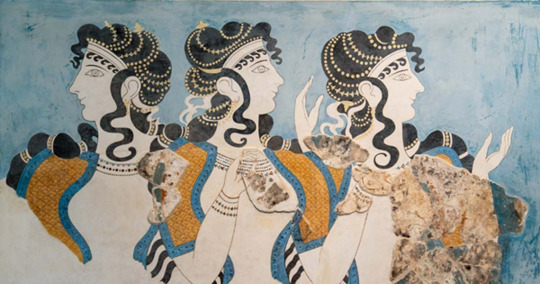
Image: The famous “Ladies in Blue” Minoan fresco.
I’ve been thinking a lot about the Minoans. Everyone loves the Minoans, right?
(If you love the Minoans, you are not going to love this series of posts.)
Part One: The Case of the Very Victorian Goddess
Let’s start with a description of the pop culture perception of the Minoans: a peaceful ancient Greek culture with sophisticated, surprisingly modernist art, and extremely sophisticated technology like running water, who were lovers of beauty and peace.
So, I read Mysteries of the Snake Goddess: Art, Desire, and the Forging of History by Kenneth Lapatin. The author focuses on the (now, I believe, pretty thoroughly debunked) Boston Goddess, a supposedly Minoan ivory figurine of a snake-handling woman. She was an absolute SENSATION when she was first displayed.
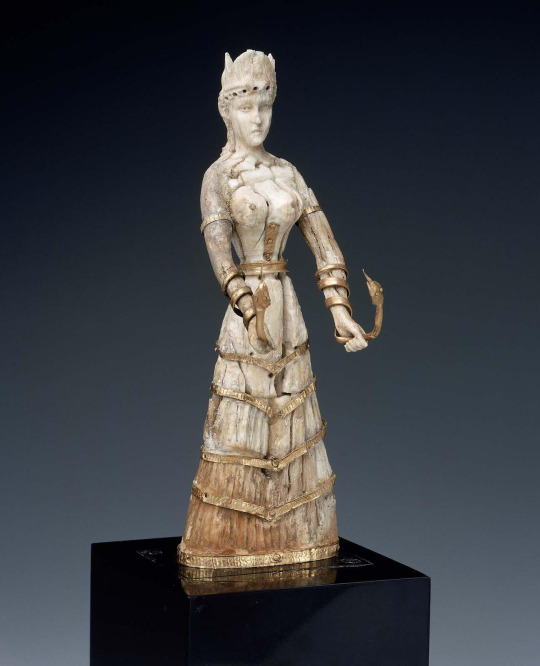
Image: The Boston Goddess
Sir Arthur Evans, the most famous archaeologist of the Minoan civilization, dubbed her the "Minoan ambassadress to the New World." She made a 1967 issue of Mademoiselle's list of "art sensations" alongside Rembrandt, Picasso, and Rodin. The Museum's monthly bulletin for Dec 1914 proclaimed her an icon of a "wonderful prehistoric civilization which, after having lain submerged, like the lost Atlantis, for three thousand years, has been brought to light again..."
A comparison to Atlantis here is telling.
Victorian "race science" and Victorian occultism were inextricably linked, the latter demonstrating a passion for interpreting the myths of non-European cultures to reflect the ideas of the former. (Its descendants live on as Ancient Aliens theories, etc.) As archaeology became more popular and contact with ancient, sophisticated, and enduring civilizations such as those in India and China increased, white Europeans (especially the Brits) and Americans started to get uncomfortable.
So they started coming up with theories that hey, those people in the East who built all that amazing stuff, who were the "cradle of civilization," who invented the alphabet? They must have been taught by an even OLDER white civilization, now lost.

Image: The Palace of Atlantis by Lloyd K. Townsend, late 19th century, everyone is very Nordic-looking.
Hence the passion for stories about Atlantis and other lost continents. It just couldn't be true that those non-Europeans were building bigger, more sophisticated civilizations long before most (northern) European civilizations built recognizable cities at all.
That longing for proof of ancient European cultural superiority was in the air when excavations of Minoan sites began.
We must have The Oldest Masters
Now, back to the Boston Goddess. Lacey Caskey, writing for the museum, noted that the statuette's distinctive posture "seems not to have been an artistic convention, but a feature of the actual appearance of this aristocratic race."
This aristocratic race. Oof.
Lapatin observes, in the book, that "Minoan civilization was all the rage, for it seemed to provide Europeans with not only the roots of the ‘Golden Age of Greece,’ long considered the foundation of Western culture, but also a sophisticated early society in its own right, a rival to the 'Oriental' cultures of ancient Egypt and Mesopotamia--known as the cradle of civilization..."
Victorian occultists, of course, tended to claim that their practices were derived from ancient Egyptian or Chaldean rituals. And again, even as they attempted to partake of the antiquity and sophistication of those cultures, they were also trying to prove that white people, or at least divine beings (rather than non-Europeans), built them. (It's always been a bit ironic to me that the Victorians clung to the idea of the superiority of Greece and Rome as the foundation for their ideas of the superiority of white people, while considering contemporary Greeks and Italians not fully white, but I digress.)
And lest you think that I'm hammering too hard on this point, some of the most prominent descriptions of Evans' finds praised the Minoan frescoes as "the Oldest Masters," and his work as proving the culture "bid fair rival to those of the Orient, and to give European Civilization an undreamed of antiquity."
It's hard to overstate the degree to which the archaeological motivation here was European insecurity.
High-Bred Beauty (and I Am Not, Alas, Describing a Horse)
And why was the Boston Goddess herself such a sensation? Her "exquisite characterization of fragile beauty," her "delicate, high-bred beauty." She is "demure," and "full of resolute charm." Professor Ernest Gardner, at Yale, described her head as "recall[ing] rather the sculptures of Gothic cathedrals of the thirteenth centuries."
Or, to be more explicit and just say the quiet part out loud, her face has also been described as "Anglo-Saxon," "European-looking," "Victorian," "Edwardian," and "Parisienne."
To understand what they’re talking about, let’s do a little compare and contrast. Here are some examples of faces from figurines that, to the best of our knowledge, are actually from Crete c. 1500-1200 BCE.


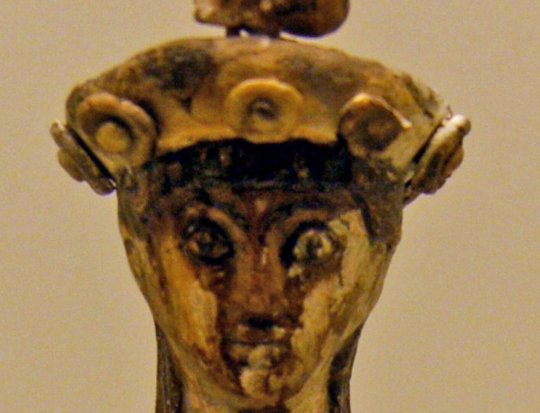
And here’s a close-up of the Boston Goddess’s face:
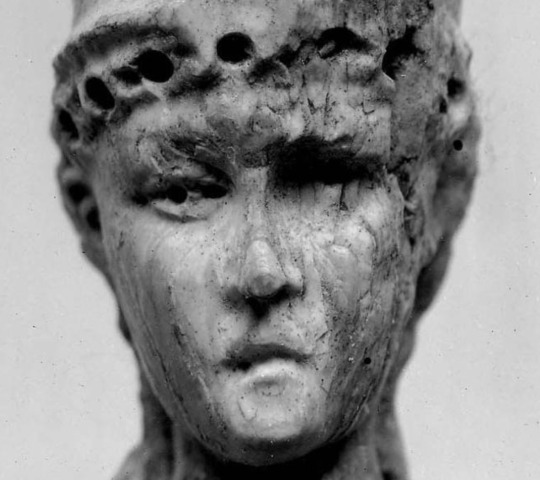
And here’s the face of a now-probably-debunked “Minoan” goddess at the Royal Ontario Museum (read more about her here):
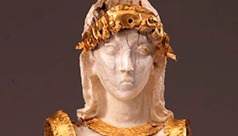
To cut to the chase, eventually they did radiocarbon testing on the Boston Goddess, and the ivory was found to date from between 1420 and 1635 CE. (Not BCE. CE. As in the Renaissance.) A similar figurine, the Seattle Boy God, is made from ivory that's about 500 years old. That in itself is pretty fascinating! They were using old ivory for the forgeries.
What do these proven and suspected fakes have in common? Well, among other things, their very Victorian facial features: inset eyes, small pouty mouths, delicate noses.
Spoiler for where I’m going with this: There are reasons why the Minoans were such an archeological craze, and those reasons are highly political. Because of the ways in which a very specific agenda shaped it, fakes that showed people what they wanted to see were accepted as real (and in some cases, are still sort of accepted as real), and we can't trust a lot of what we supposedly "know."
In Part 2: Bagging On Sir Arthur Evans Forever.
#archaeology#atlantis#minos#crete#minoans#arthur evans#white supremacist archaeology#snake goddess#art forgery#minoan
73 notes
·
View notes